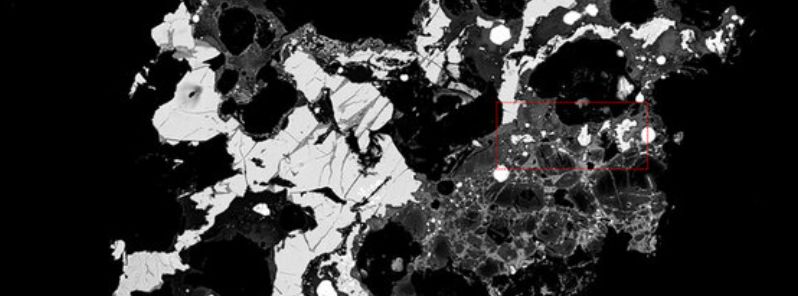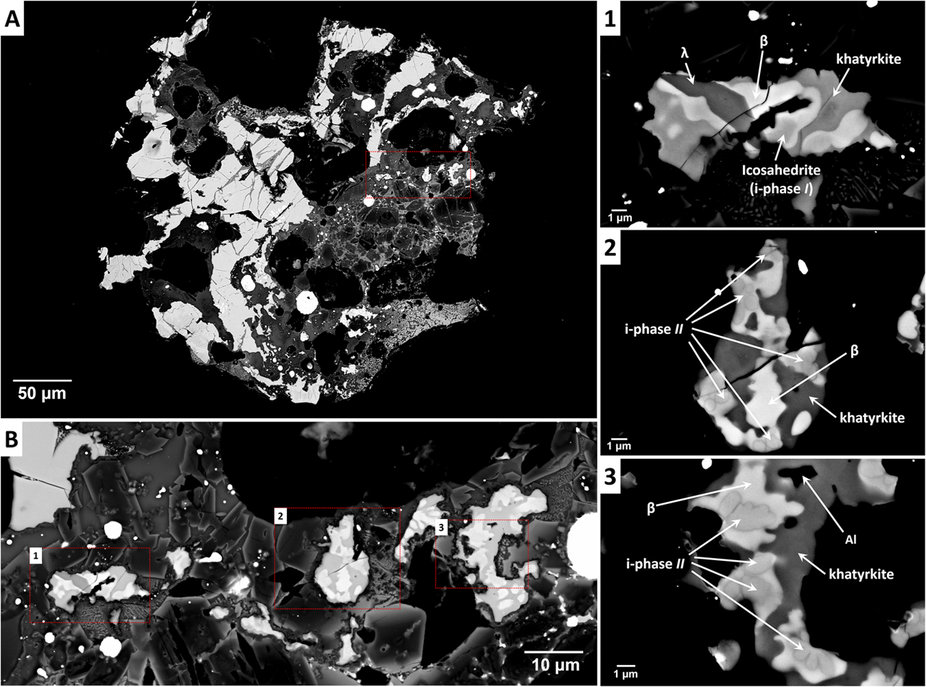A new type of quasicrystal, unknown in nature, discovered in Khatyrka meteorite

A new type of quasicrystal was discovered in the meteorite which fell in Khatyrka, Russia, in 2011. The quasicrystal was never found before and the meteor appears to be the only known source of the unconventional crystal on Earth.
The Khatyrka meteorite was found in the Koryak Mountain's, eastern Russia in 2011. It was found in 10 fragments, between 1 and 2 mm (0.04 and 0.08 inches) in diameter. The meteorite has likely suffered an impact in space and experienced extreme pressure over 5 GPa and temperatures over 1 200 °C (2 192 °F) in the process.This would explain how the quasicrystals were formed, as they can only be produced in such extreme conditions.
Quasicrystals are solid structures which defy the known laws of crystallography. They build non-repetitive patterns of clear symmetry, unlike the regular crystalline solids.
The discovered ones are about 50 microns (0.002 inches) in size, have a complex five-fold symmetry and contain aluminum, copper, and iron. The discovered quasicrystal is the first which had not been produced in the laboratory conditions before it was found in nature. The meteorite was also found to contain icosahedrite mineral, of the same 60-point rotational symmetry as the quasicrystal.

(A) Grain 126A; red dashed box indicates the region to be enlarged in (B). (B) The area where there are the three metal assemblages containing the two different icosahedral phases; red dashed boxes (indicated as 1, 2 and 3) indicate the regions to be enlarged in panels on the right. Panels 1, 2 and 3 show the different associations of minerals in the three metal assemblages. Image credit: Bindi et al, 2016.
"Up to now, all the [natural] minerals crystallized in one of the seven-crystal systems or they were amorphous. Quasicrystals violate the classic crystallographic rules of those of the seven-crystal systems, and so they cannot be classified with the current classifications," explained Luca Bindi, the author of the study of the University of Florence in Italy.
The first quasicrystal was produced by Dan Shechtman in 1982. At the time, the research was highly controversial and he was asked to abandon his research. However, the evidence was on his side and he was finally rewarded with the Nobel Prize in Chemistry in 2011. In 2009, two matching quasicrystals were discovered in fragments of the Khatyrka meteorite. However, their structures were familiar and very similar to a synthetic quasicrystal produced from aluminum, copper, and iron in laboratory conditions.
The newly discovered quasicrystal, although originating from the same meteor is the first one ever discovered prior to being produced in the lab, and the third one ever found in nature.
Reference:
- "Collisions in outer space produced an icosahedral phase in the Khatyrka meteorite never observed previously in the laboratory" – Luca Bindi, Chaney Lin, Chi Ma & Paul J. Steinhardt – Scientific Reports (2016) – doi:10.1038/srep38117
Featured image credit: Bindi et al, 2016

This is interesting. It made me want to learn more about gluons. TY.